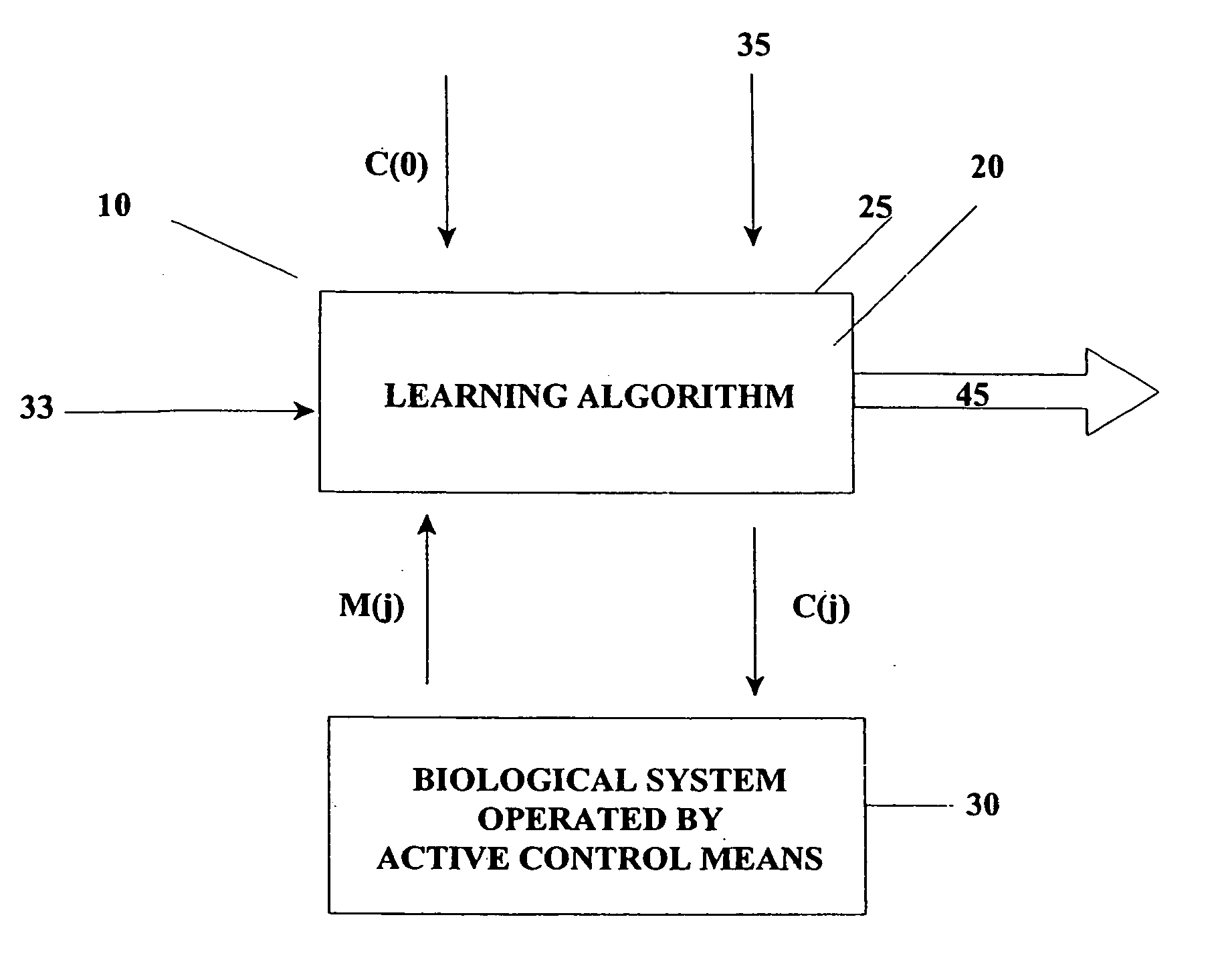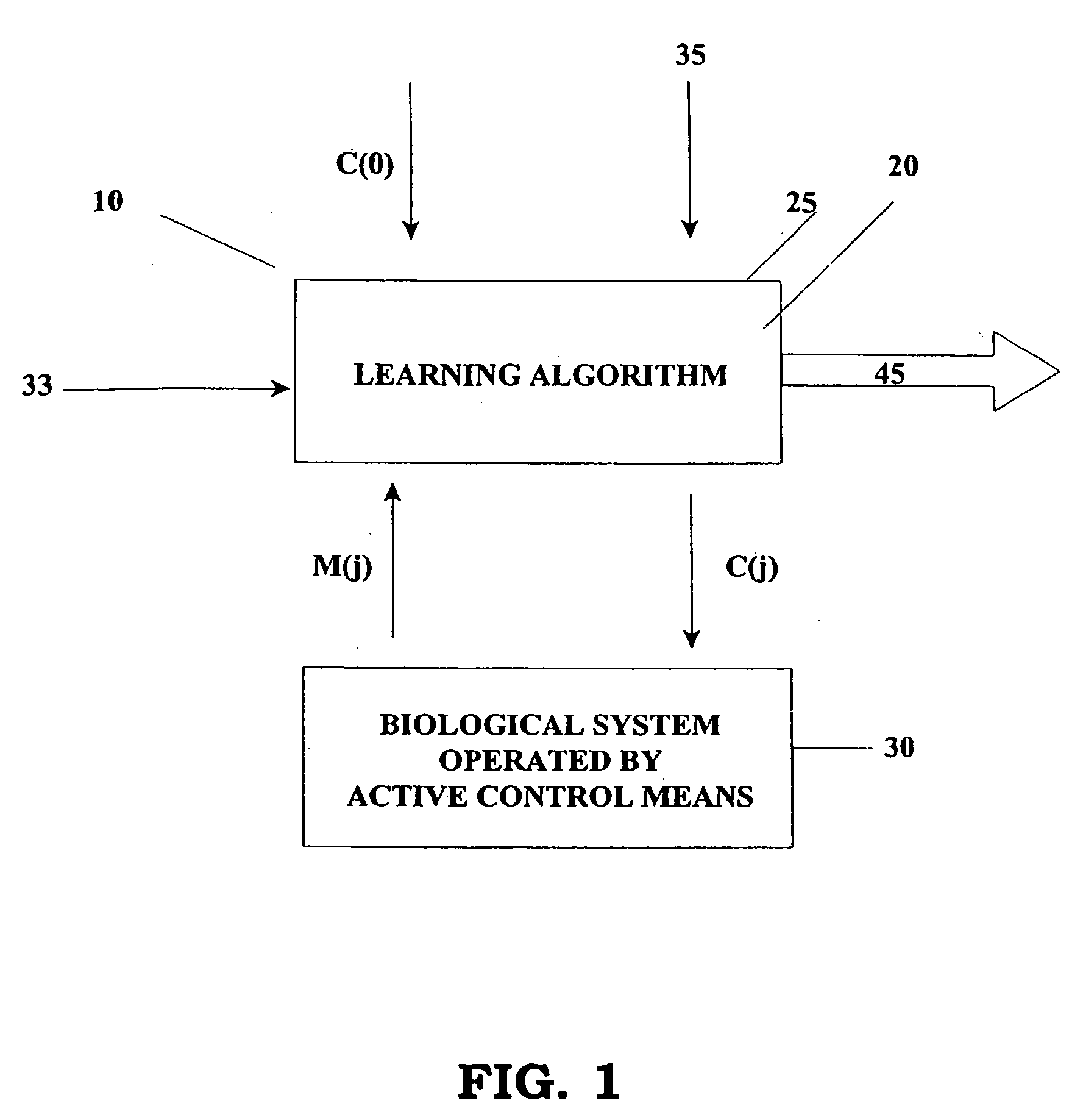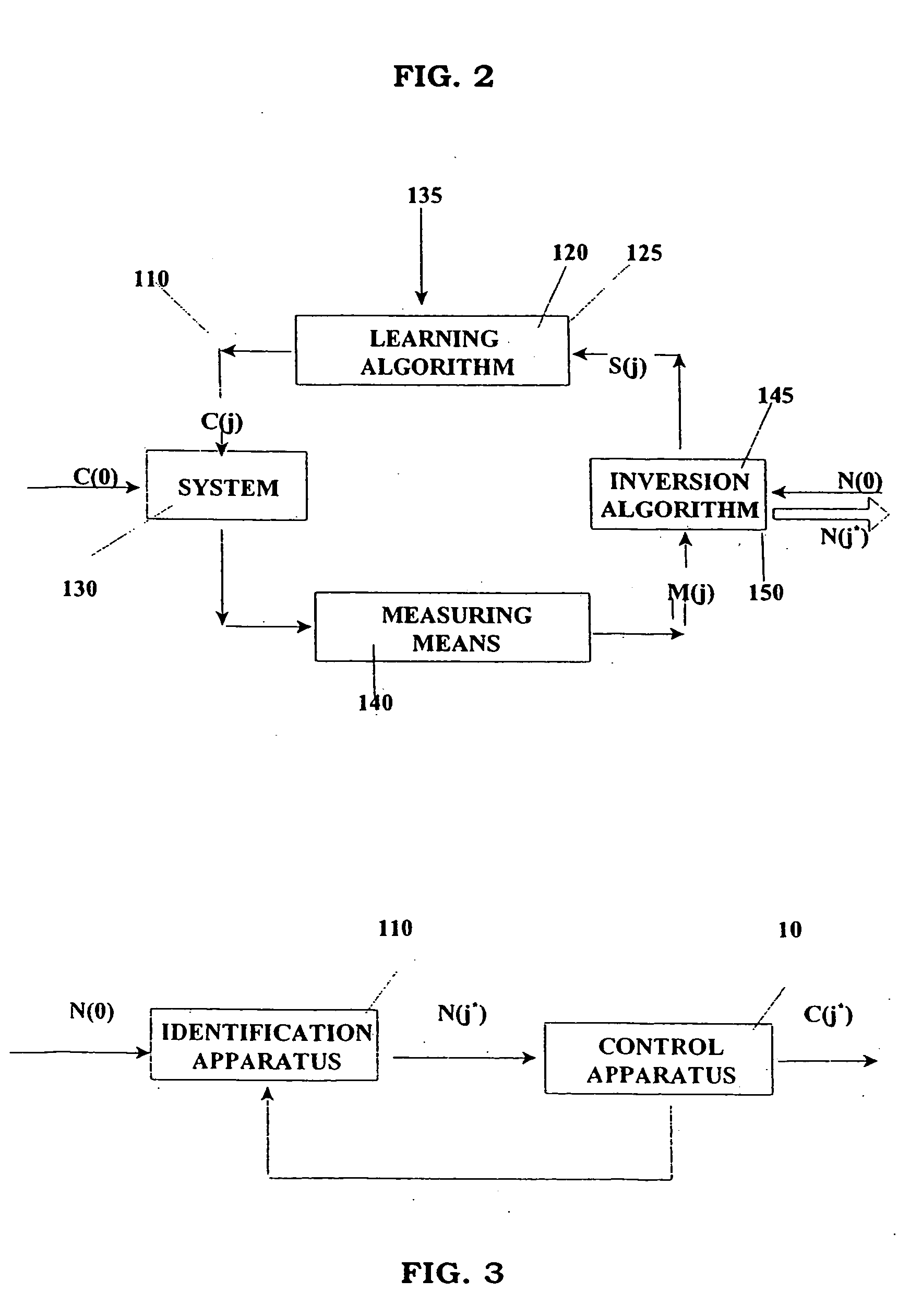Closed-loop apparatuses for non linear system identification via optimal control
a closed-loop, non-linear technology, applied in the direction of instrumentation, sampled-variable control system, testing/monitoring control system, etc., can solve the problems of insufficient optimality, high cost of experiments and testing in realistic applications, and insufficient efficiency, so as to narrow down the distribution of system structure. , the effect of maximum efficiency
- Summary
- Abstract
- Description
- Claims
- Application Information
AI Technical Summary
Benefits of technology
Problems solved by technology
Method used
Image
Examples
Embodiment Construction
[0054] Closed-loop control apparatuses in accordance with the present invention serve to optimally control biological system response through externally introduced controls. The apparatuses operate cyclically, linking laboratory instrumentation with specifically designed computer algorithms that achieve optimal control and system identification by the analysis of the observed responses of the system prior to further control settings to determine the next set of control settings that better achieve the control objectives. The cycle is repeated until the best means is identified to control the biological system behavior.
[0055]FIG. 1 is a schematic of a device 10 embodying an control apparatus according to the present invention, wherein control settings C(j), j=0, 1, . . . are applied through an active control means 30 by learning algorithm 20, operated by microprocessor 25, to guide experiments designed to discover the optimal means to attain a desired behavior for a biological syste...
PUM
 Login to View More
Login to View More Abstract
Description
Claims
Application Information
 Login to View More
Login to View More - R&D
- Intellectual Property
- Life Sciences
- Materials
- Tech Scout
- Unparalleled Data Quality
- Higher Quality Content
- 60% Fewer Hallucinations
Browse by: Latest US Patents, China's latest patents, Technical Efficacy Thesaurus, Application Domain, Technology Topic, Popular Technical Reports.
© 2025 PatSnap. All rights reserved.Legal|Privacy policy|Modern Slavery Act Transparency Statement|Sitemap|About US| Contact US: help@patsnap.com



